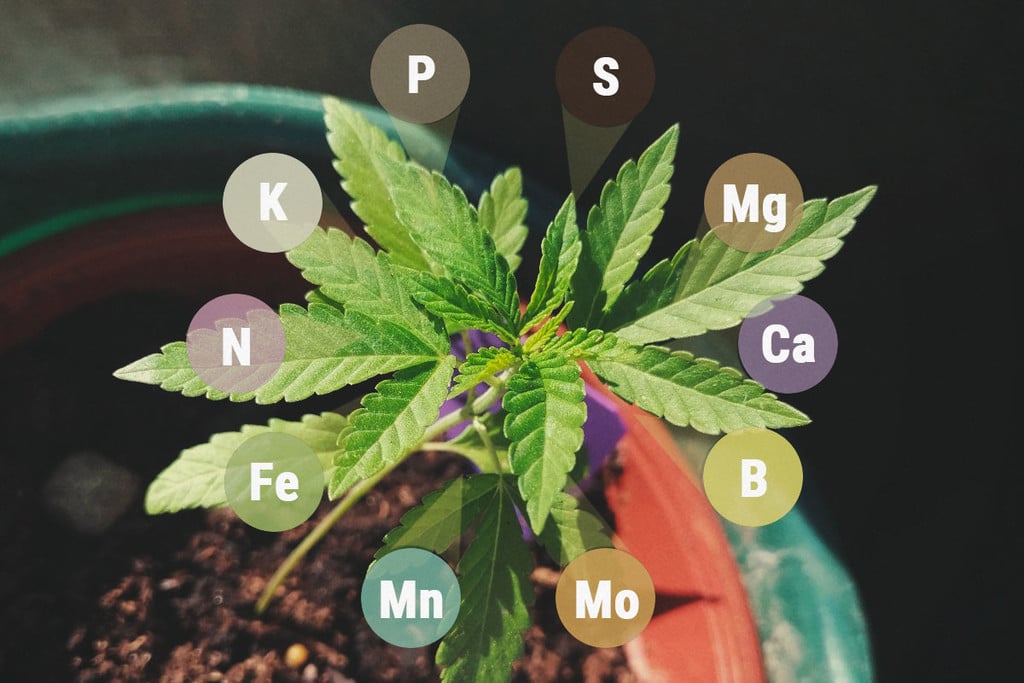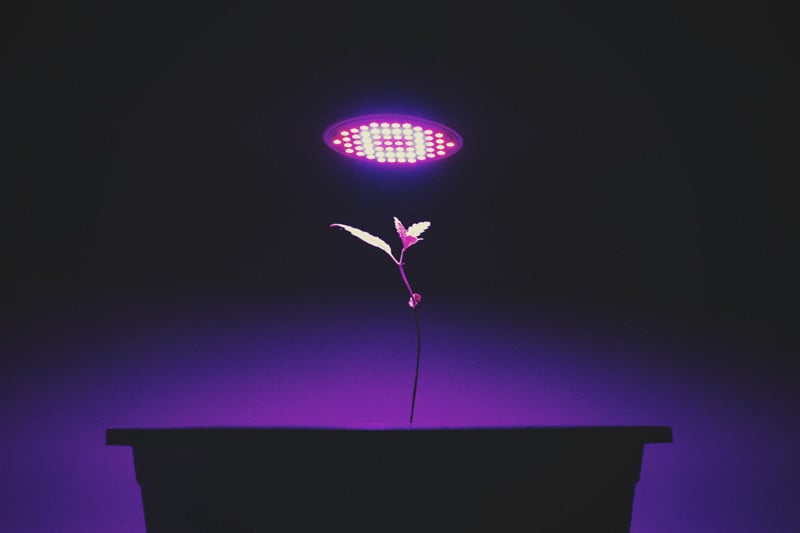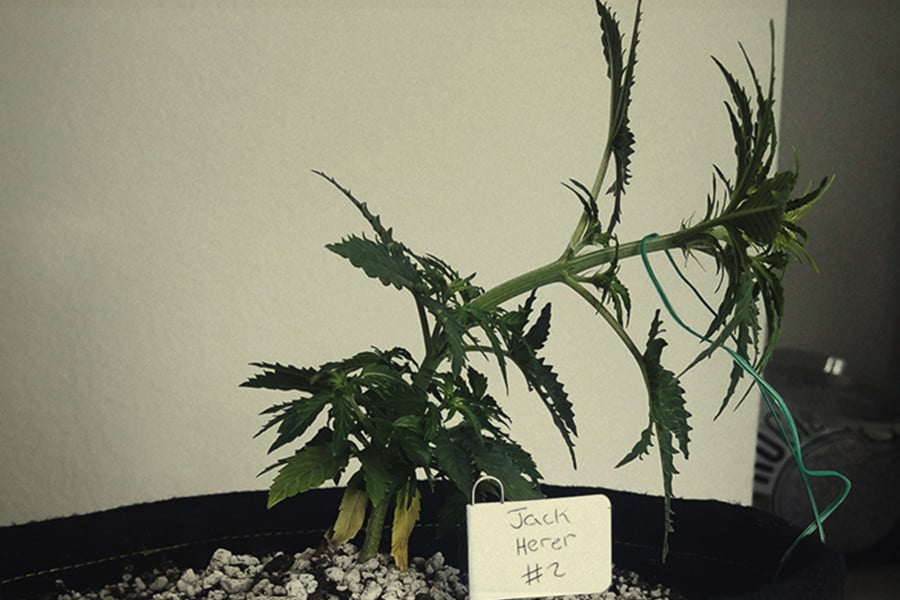.

How To Keep a Cannabis Journal: For Growers and Consumers
Whether you want to grow the biggest, strongest bud, or just figure out what kind of weed really helps you wind down at night, a cannabis journal can help you achieve your weed-related goals. Read on to discover what to record, how to record it, and what you can gain from doing so.
Contents:
Keeping a cannabis grow journal, or just a general weed journal, can satisfy many different motivations. Whether you want to keep an eagle eye on the behaviour of different strains, figure out when to plant your seeds, or just record how different strains really taste and feel, a cannabis diary can be a great companion.
Suitable for both growers and consumers of cannabis, a cannabis grow journal simply provides a means to record and share observations and discoveries. By giving you a comprehensive overview of the process and characteristics, it allows you to hone in on practices that work, and strains that really hit the spot.
What Is Cannabis Journaling?
Cannabis journaling can fit into your life however you see fit. It can range from recording the specific behaviours of a certain strain, or even one plant, to recording your general thoughts under the influence of one strain or another.
Generally, for growers, cannabis journals provide two main functions. The first is to record the progress of the grow. The sort of things that may be covered include:
| Growth | Size | ||||||
| Nutrients | Watering | ||||||
| Pests | Deficiencies | ||||||
| General observations | |||||||
|---|---|---|---|---|---|---|---|
| Growth | Size | Nutrients | Watering |
| Pests | Deficiencies | General observations |
The second function of a weed journal is as a marijuana grow calendar. You can track when plants require feeding, watering, etc., and if things are progressing as predicted. By combining the two aspects of recording progress and predicting progress, any issues can be more easily overcome.
For smokers, keeping a weed journal allows you to assess with a sober mind how you felt about each strain while high. This gives you a comprehensive sense of how each type of smoke actually affects you.
Cannabis Grow Journal
But what to include in a cannabis grow journal? And what do they already come with?
Tracking a Grow
For many growers, the most useful function of a cannabis grow journal is to keep track of their progress. Through careful observation over time, you can really fine tune the way you treat your plants.
Alongside giving you space to organise as you wish, marijuana grow diaries tend to have dedicated sections for every aspect of the grow. Below is a snapshot of what you can expect.
-
Germination Method
First, why not try out a few different germination methods and keep track of the outcomes? Not only will this quickly tell you the most successful method of germination, but by recording the entire life cycle and results of the harvest, you may even be able to figure out if germination method changes the final results, all those months later.
-
pH, EC, Nutrients, and Watering
Record when you add nutrients, which nutrients to add, and in what ratios. This information, combined with careful observation of your plant's growth, yield, and quality, will give you amazing insight into the effects of different nutrient blends. Moreover, if you find a strain you really love, over a couple of crops you’ll learn its secrets, and should be able to get the very most from it.
Likewise, observing the effects of watering will put you in good stead. Perhaps some strains like to live in slightly damp conditions, while others thrive when they get to dry out from time to time. Keeping a marijuana grow diary will help you figure out what your plants crave.
After watering and feeding, what happens to the pH and EC levels? How could you adjust this for next time to yield optimal results?
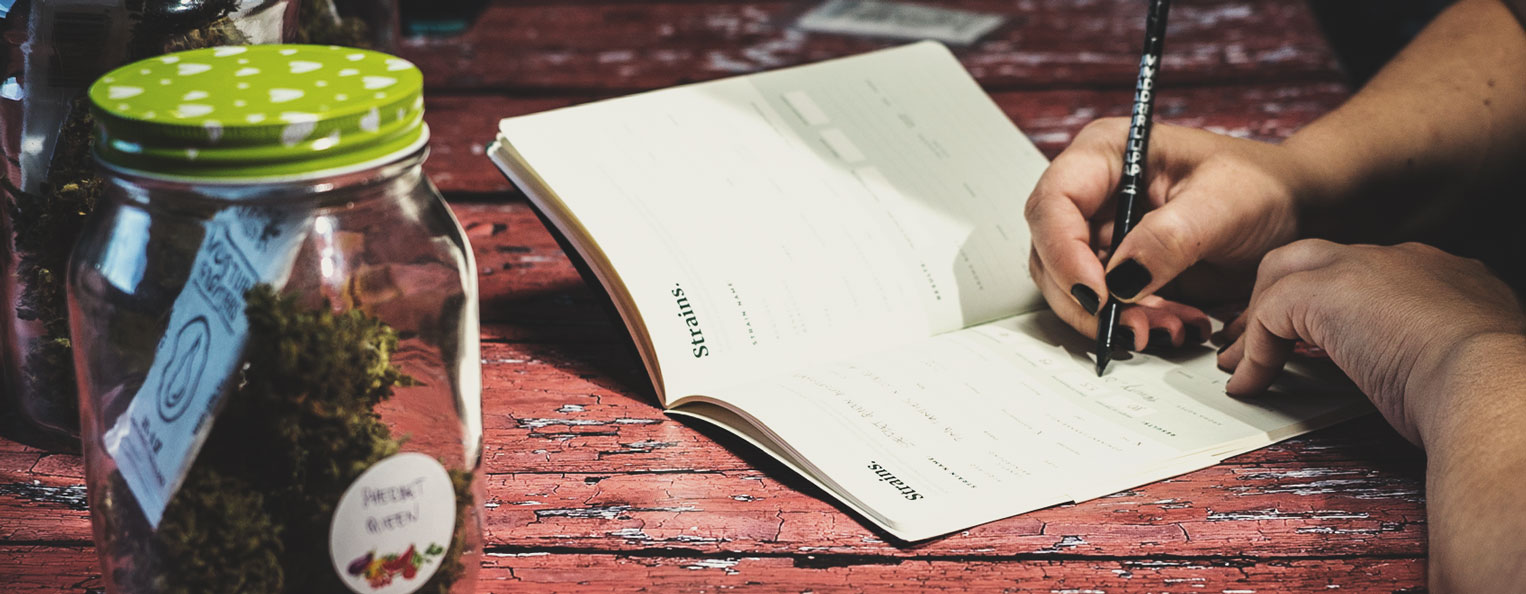

-
Lighting
The world of cannabis lighting is not as clear-cut as some think. By recording how your plants respond to different kinds of light, at different spectrums, different times, and varying distances, you can decide for yourself what works best.
Perhaps you’re trying out some autoflowering strains and want to determine the best lighting schedule. The internet is rife with speculation, but without any clear answers—so why not discover them yourself?
-
Week by Week
You could even do it day by day if you really want to understand your little green friends. A cannabis journal is the perfect tool for tracking the ongoing development of your plants through each stage of growth. How long does the pre-flowering stage actually last? In which week does the most growth happen? When do they really begin to smell?
All these questions and more can be answered by you, in your diary.
-
Temperature and Humidity
Tracking your plants’ response to environmental changes will help you give them the best home in which to thrive. Under what conditions did they seem most vigorous? Or perhaps they all got a fungal infection at the same time. What was the humidity at that time?
-
Pests and Sickness
Likewise, detecting when bad things happen to your plants, and how quickly they spread or recede, is powerful knowledge. Compare it with other information you’ve attained; perhaps your crops always get bud rot or powdery mildew? Or maybe they always end up with nute burn?
Recording any plights as they occur will help you see what else was happening at that time. What was the temperature and humidity? How much were you feeding them? How close were the lights?
In discovering these connections, you can ensure you don’t make the same mistake twice.
-
Drying and Curing
It doesn’t end at harvest. How long is it best to hang your weed for? How often should you burp during curing?
Fiddle around and find out!
Marijuana Grow Calendar
As mentioned, the other major function of a weed journal is as a marijuana grow schedule. With a full calendar function, you can use the knowledge you've gained, and that given by the breeder, to predict a schedule for your cannabis grow:
| When to plant seeds? | When should each plant finish vegging? |
| At what speed should the buds develop? | When should it be ready for harvest? |
| When to plant seeds? | When should each plant finish vegging? | At what speed should the buds develop? | When should it be ready for harvest? |
Knowing if you're on track can give you great insight into how to proceed. If your plants won’t enter the flowering phase, maybe you have a light leak. Or, if harvest is drawing close but the buds aren’t developing much, perhaps they're nutrient-deficient or you're using the wrong spectrum of light.
It’s clear to see how using the journal and calendar in conjunction puts you in a very knowledgeable position. It even helps with planning the next grow. If you know you’ve only got a week left until it’s time to harvest, you can get to germinating your next batch of seeds so they're ready to move into the grow room right after your current crop finishes.
Cannabis Consumption Journal
So, you’ve harvested and cured your crop, and now you want to know which practices yielded the best-quality bud. Or, maybe you just love smoking and you want to learn the nuances of the many different strains available. Either way, a marijuana consumption diary is essential.
What To Record in a Cannabis Consumption Diary
Really, this is up to you. You could focus mostly on the quality of the bud itself, on the effects, or how you feel the next day. Keeping a consumption diary is a very fluid and personal matter. Nevertheless, here are some ideas.
-
Appearance, Aroma, and Flavour
What are the buds actually like? Are they a beautiful purple, or perhaps a vibrant, almost toxic green? Do these aesthetics in any way correlate to the flavour or quality of the high?
If you’re really into your weed, you can even try to identify which terpenes are present. Calibrate your olfactory senses to such a degree that you can tell, from just a whiff, whether you’ve got eucalyptol, limonene, or linalool packed into your favourite flowers.
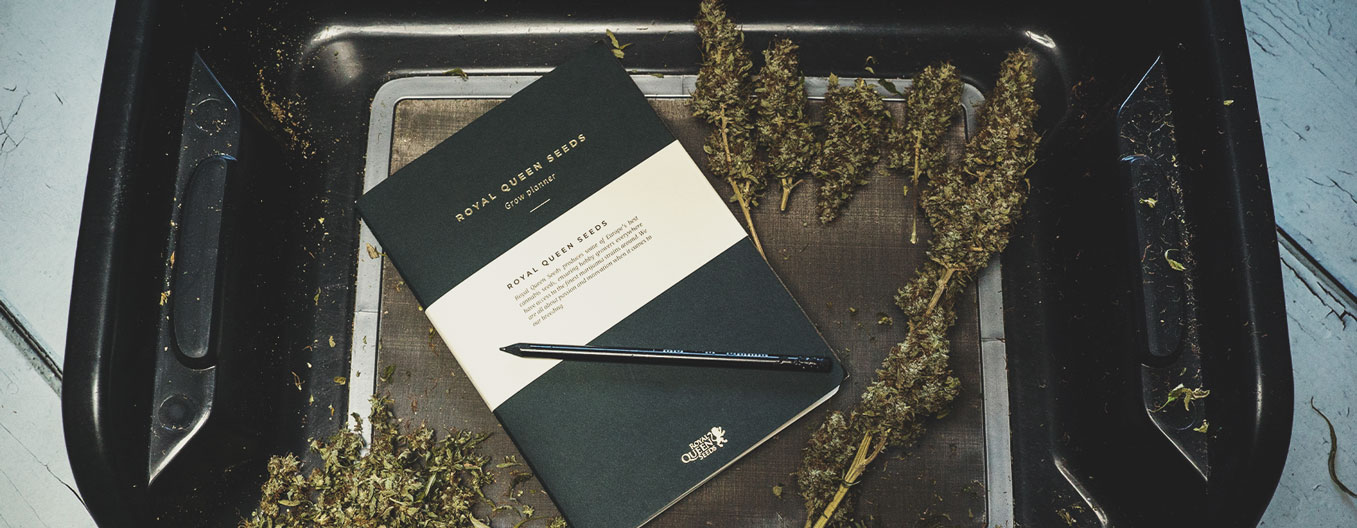
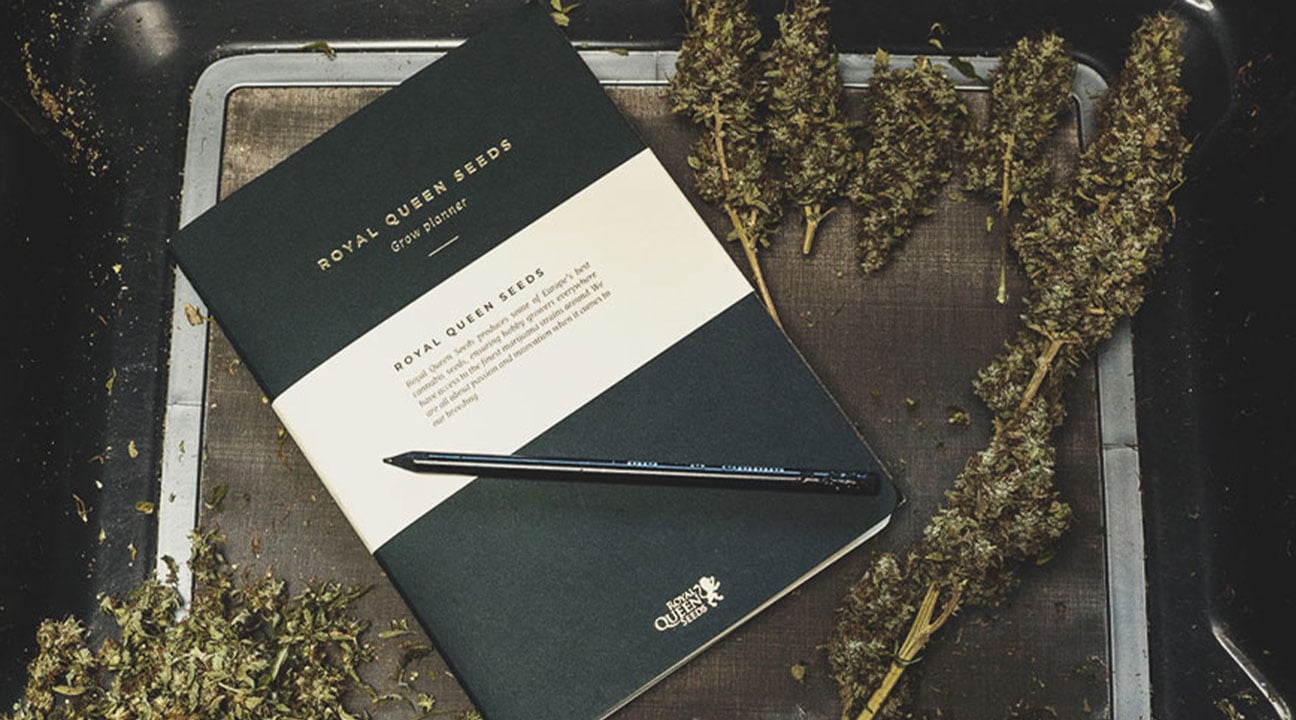
-
Effects
Of course, for most people, the end goal of any cannabis journey is to experience some soothing or elevating effects. Different strains, and different methods of growth and curing, will result in different ratios of cannabinoids, and thus different effects. But which do you prefer?
With a consumption journal, record factors such as:
| Method of consumption | Time of consumption |
| Size of dose | Effects: elevated, cerebral, physical, relaxing, etc. |
| Method of consumption | Time of consumption | Size of dose | Effects: elevated, cerebral, physical, relaxing, etc. |
Pinpoint the types of weed you really love. Do you get a kick out of THC-packed sativa strains, or are they a little overwhelming? Perhaps you prefer a strain with a 1:1 CBD to THC ratio and deep, physical effects?
Regardless, keeping a weed journal means that, given time, you can identify the strains that work best for you. If you consider yourself a holistic cannabis user, this can be even more crucial, and could even improve your quality of life.
Conclusion: Cannabis Journaling Can Benefit Everyone
Journaling allows cannabis growers to get better results, in terms of both yield and quality. Moreover, it allows consumers to identify the types of strains that best satisfy their mind and body.
But it’s bigger than this. Journaling also creates a large record of communal knowledge, and this is a powerful thing. Better growing methods can be discovered, as can optimal curing times, harvesting tips, and much more.
For consumers, it provides detailed observations on the relationships between strains and their effects and flavours. For holistic cannabis users in particular, it allows people to come together and share potentially life-changing discoveries about the effects of different types of cannabis.
Together, this combined knowledge can lead to greater innovation and broader understanding.



























